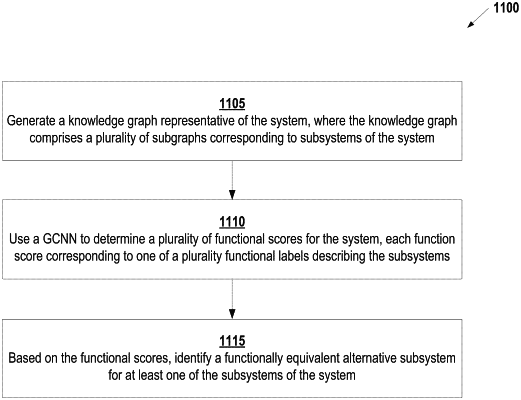| CPC G06N 5/022 (2013.01) [G06F 16/9024 (2019.01); G06F 17/15 (2013.01); G06F 18/21 (2023.01); G06N 3/045 (2023.01); G06N 5/046 (2013.01); G06N 20/00 (2019.01); G06Q 10/04 (2013.01); G06Q 50/01 (2013.01)] | 16 Claims |

|
1. A computer-implemented method for learning structural relationships between nodes of a graph, the method comprising:
generating a knowledge graph comprising a plurality of nodes representing a system;
applying a graph-based convolutional neural network (GCNN) to the knowledge graph to generate a plurality of feature vectors describing structural relationships between the nodes, wherein the GCNN comprises:
a graph feature compression layer configured to learn a plurality of subgraphs representing embeddings of the nodes of the knowledge graph into a vector space, the plurality of subgraphs being selected from a heterogeneous knowledge graph as a selected number of neighboring nodes from each node in the knowledge graph to define a path associated with the node, and a second selected number of paths associated with the node,
a neighbor nodes aggregation layer configured to (i) derive a plurality of neighbor node feature vectors for each subgraph and (ii) aggregate the neighbor node feature vectors with their corresponding subgraphs to yield a plurality of aggregated subgraphs,
a context generator for generating context of each node in the knowledge graph by:
for each target node, selecting all nodes within a certain radius of the target node;
randomly selecting a number n nodes from the selected nodes to generate a context of the target node; and
selecting a number m contexts for each target node, each context having a size n;
a subgraph convolution layer configured to generate the plurality of feature vectors based on the aggregated subgraphs and contexts; and
identifying functional groups of components included in the system based on the plurality of feature vectors.
|